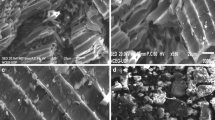Abstract
Chickpea seedlings (Cicer arietinum L.) were used to initiate callus on B5 medium supplemented with 2 mg/l 2,4-dichlorophenoxyacetic acid+0·5 mg/l NAA and kinetin. After a month's growth the healthy callus was transferred to a similar medium supplemented with different concentrations of the pesticide Rogor (O, O-dimethyl-S-methyl carbamoyl methyl phosphorodithioate). After one month in the pesticide medium most of the cells exposed to higher concentration died, but a few cells remained healthy. In a control medium the cells remained healthy over the same period. The pesticide treatment inhibited the protein content and the activity of the enzyme amylase, whereas an increase in the activity of peroxidase was observed. The surviving pockets of pesticide exposed cells were exercised and transferred to a medium that caused shoot initiation and later to a medium that caused root formation from the base of the shoot. Plants were taken through to maturity in soil. The resistant cell line contained high levels of proteins and peroxidases compared to control. Additional bands of peroxidase isozymes were observed in the resistant line.
Similar content being viewed by others
References
Agarwal S, Das N, Beg M U and Krishnamurthy C R 1982 Endosalfan induced biochemical changes in germinatingCicer arietinum seeds;Proc. Indian Natl. Sci. Acad. B48 518–524
Agarwal S and Beg M U Effect of Endosalfan on endogenous IAA, cell wall polysaccharides, peroxidase activity and its isoenzymatic patterns in germinatingC. arietinum seeds;Indian J. Exp. Biol. 20 319
Barg R and Umiel N 1978 Selection of herbicide resistance in tissue culture and phenotypic variation among the resistant mutants; inProduction of natural compounds by cell culture methods (eds) A W Alfermann and E Reinhard (Munich: B P T Report Gasellschaft fur strahlen and unwebtforschung) pp 337–344
Chalef R S and Parson M F 1978 Direct selectionin vitro for herbicide resistant mutants ofNicotiana tobacum;Proc. Natl. Acad. Sci. USA 75 5704–5707
Cormer H H 1967 Plant protection and world crop production (West Germany: Farbenfabriken Bajer and lever Kussen)
Cottom C 1965 The ecologists role in problems of pesticide pollution;Bioscience 15 457–463
Davis R J 1964 Disc electrophorosis II. Methods and applications to human serum proteins;Ann. N. Y. Acad, Sci. 121 404–427
Duggan R E, Barry H D and Johnson L Y 1966 Pesticide residue in total diet samples;Science 151 101–104
Food and Agricultural Organization of the united nations (1975)Production year book (1974) (Rome: FAO United Nations)
Galston A W and Dalberg L Y 1954 The adoptive formation and physiological significance of the indole acetic acid oxidase;Am. J. Bot. 41 373–380
Gamborg O L, Miller R A and Ojima K 1968 Nutrient requirements of suspension cultures of soyabean root cells;Exp. Cell Res. 50 151–158
Gressel J, Zilkha S and Ezra G 1978 Herbicide action resistance and screening in cultures vs plants; inFro frontiers of plant tissue culture (ed.) T A Thrope (Calgary: Univ. of Calgary Press) pp 427–436
Gressel J 1980 Use and drawbacks of cell cultures in pesticide research; inPlant cell culture: Results and perspectives (ed.) F Sala (Amsterdam: Elsevier/North Holland, Biomedical Press) pp 379–88
Kamerbeck G A 1956 Peroxidase content of dwarf types and giant type plants;Acta Bot. Neerl. 5 257–263
Konishi M 1956 Studies in development of flowering stalks in long day plants in relation to auxin metabolism;Men. Coll. Agric. Kyoto Univ. 75 1–70
Larkin P and Scowcroft W R 1981 Somoclonal variation—a noval source of variability from cell cultures for plant improvement;Theor. Appl. Genet. 60 197–214
Mehata P M, Patel R J and Rao B U N 1975 Effects of gamma irradiation on enzyme amylase in soyabeans (Glycine max L. var J. 202);Botanique 4 125–130
Rao S 1983Effect of X-rays gamma rays and Metasystox on physiological and morphological variabilities in Abelmosochus esculentus (L) moench and Cyamopsis tetragonoloba (L) Taub, Ph.D. thesis, Kakatiya University, Warrangal
Rao S 1985 Phytotoxic effects of some pesticides onCicer arietinum; International Conference on pesticides, toxicity, safety and risk assessment Lucknow (Abstract) p 58
Saxena R P and Beg M U 1985 On the selection of pesticide resistant cell line;International Conference on pesticides toxicity, safety and risk assessment Lucknow (Abstract) p 13
Veleminisky J and Gichner T 1963 Cytological and genetic effects of insecticide systox onVicia faba L andArabidopsis thaliana L. (Heynh):Biol. Plant. 5 41–52
Wuu K D and Grant W P 1966 Morphological and somatic chromosomal aberrations induced by pesticides in barley (Hordeum vulgare);Can. J. Genet. Cytol. 3 481–501
Author information
Authors and Affiliations
Rights and permissions
About this article
Cite this article
Rao, S., Naidu, M.M. A tissue culture derived pesticide tolerant line of chickpea (Cicer arietinum L.). Proc. Indian Acad. Sci. 99, 523–527 (1989). https://doi.org/10.1007/BF03053421
Received:
Revised:
Issue Date:
DOI: https://doi.org/10.1007/BF03053421




